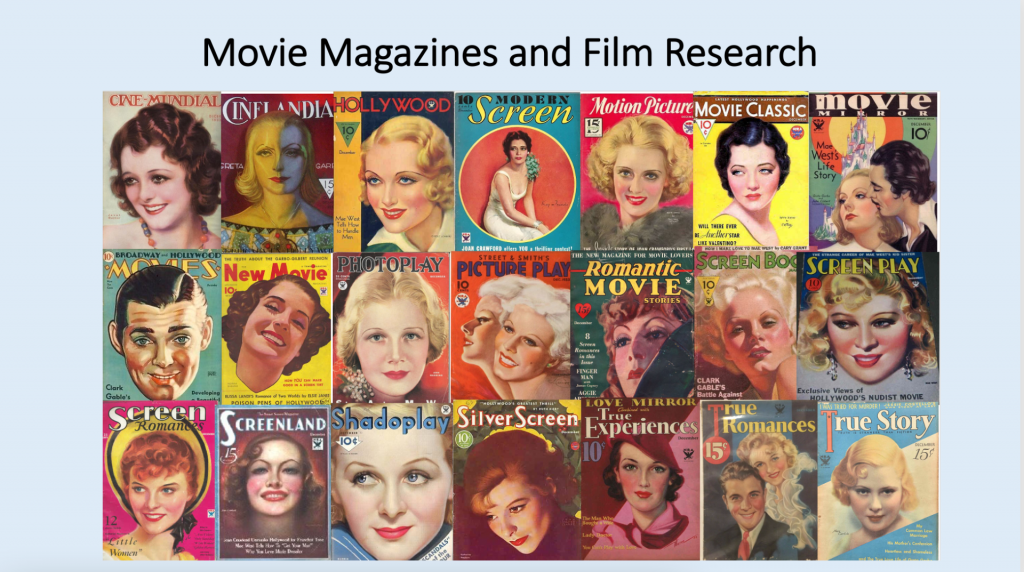Sally Jones, MA student, reflects on the first session of a new workshop series on ‘Archival Sources and Methodologies’ organised with the University of Brighton Design Archives.
I recently attended the first of the Archival Sources and Methodologies workshops, organised by the Centre for Design History in collaboration with the Design Archives. The theme of the workshop was ‘Magazines’ and for about ninety minutes we immersed ourselves in the wonderful of early-mid twentieth-century popular magazines, movie fan magazines and design periodicals. Guest speakers were Professor Tamar Jeffers McDonald, Dean of the School of Arts and Media, and PhD students Johanna Lance and Lisa Hood, who each gave a short ‘lightning’ talk reflecting on their use of, and approaches to, magazines as a research tool. This was rounded off by a presentation from Sue Breakwell, Director of the University of Brighton Design Archives, about the Design Archive collection.

Image from Design Council Archive, University of Brighton Design Archives
The speakers provided some fascinating insights into research methodologies using magazines. Exploring embodied practice, Johanna explained how she followed pattern instructions published in a popular magazine from the 1920s to recreate a leather motoring hat, and Professor Jeffers McDonald demonstrated her attempts to piece together the shards of a Hollywood film star photograph, re-enacting a competition from an old movie magazine. Attendees were able to ask questions, share ideas and compare notes on their own experiences of researching with magazines and archives, both digital and physical. There was also the chance to examine historic materials from the Design Archives, as well as a sample of movie magazines from Professor Jeffers McDonald’s personal collection.

Image taken from Johanna Lance’s research.
The talks and discussions revealed some of the opportunities offered by digital resources, which allow for quick searching of vast amounts of material and easy remote access to collections. The potential to widen research possibilities by removing accessibility barriers of time, expense and physical location is particularly exciting. Lisa showed how an online database had enabled her to map the number of hits generated by searching for film stars over a period of time: a crude indication of their rise and fall in popularity. These benefits were counter-balanced by concerns regarding a lack of transparency in the mediation of material by digitised archives, assumptions about the coverage of the archive, and the tendency to forget that access is only of a limited, possibly fragmentary collection.

Image taken from Tamar Jeffers McDonald’s presentation
As would be expected from students and historians of material culture, there was a mutual appreciation of the materiality of magazines and the physical experience of flicking through pages, and, in contrast, a shared lament over what is lost when they can only be accessed via a screen. Johanna spoke of discovering receipts and handwritten notes tucked into magazines and the trail of evidence left by previous readers where copies have been thumbed through and pages clipped, or corners folded down. The feel and quality of the paper, the size and layout, the free gifts that fall out of fashion magazines – all these details are lost in digital format. Professor Jeffers McDonald highlighted the importance of the context in which each element of magazine content appears, how the juxtaposition of an advertisement, for example, can add a different slant or layer of meaning to an article – again demonstrating what may be missed when one aspect is reproduced in isolation, dislocated from its original setting. Ploughing through a series of journals may take much longer than an online search, but it allows the researcher to absorb a flavour of the period and contextualise the printed content. It also facilitates the serendipitous discovery of information that may not have been retrieved through a targeted search. I was certainly left in no doubt that while digitized archives bring many advantages to the researcher, they cannot ever replace a physical archive.
Overall, the workshop was a thoroughly enjoyable, informal session, offering the opportunity to chat to fellow researchers, share experiences and enthusiasm, and hear about ongoing research with magazines – a welcome treat as we emerge from two years of lockdowns and limited access to both physical archives and real people! I’m looking forward to hearing about future sessions and what the next workshop might bring.
Read about the second session on Photographs here





Leave a Reply